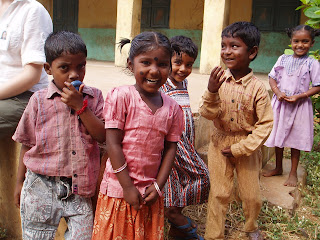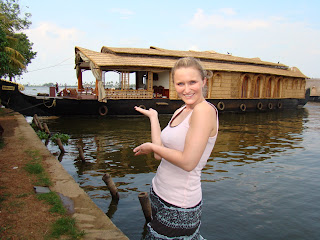Malaria is a disease caused by protozoan parasites of the gnus Plasmodium that is transmitted by the female Anopheles mosquito and has been present throughout most of human history. It was once nearly eradicated but is now re-emerging as a leading infectious killer. There are four different types that can affect humans: Plasmodium falciparum, P. vivax, P. ovale, and P. malariae. Of these P. falciparum is the most common and most serious causing 80% of cases of malaria and 90% of the deaths. Let us now examine the epidemiology, pathogenesis, symptoms and management.
The major distribution of malaria is around the equator in tropical and subtropical regions of the Americas, Asia, and Africa. The disease targets mainly the poor in rural areas. About 40% of the world’s population is affected by this disease with 2.5 million people at risk and 500 million severely ill yearly. In Africa a child averages 1.6 to 5.4 episodes per year, and malaria is responsible for 1 in 5 childhood deaths. One child dies from the disease every 30 seconds.
Approximately 500 million people are diagnosed with malaria yearly. One to three million of these cases result in death. Uganda and Tanzania lead the world in reported cases of malaria with 12.4 million and 10.7 millions cases respectively. India comes in at number twelve with 1.5 million cases. However, due to the large population of India, only 1.67 cases occur per 1000 people while in Uganda and Tanzania there are 478 and 290 cases per 1000. Out of 1.3 million deaths from malaria in 2002 16,498 were from Congo and 14,498 were from Tanzania.
Malaria is more prevalent in poor countries that do not have the financial capabilities to prevent disease. However, the disease also hinders economic development and has a huge economic impact from healthcare costs, lost working days, missed school, decreased productivity due to brain damage from cerebral complications, and decreased tourism.
As mentioned before the Plasmodium parasite is transmitted by the female Anopheles mosquito. Males do not transmit the disease because they do not feed on blood. The cycle begins with ingestion of the parasite from feeding on an infected human. Then the gametocytes form gametes and fuse in the mosquito gut producing an ookinete. The ookinete penetrates the gut lining and forms an oocyst in the mosquito gut wall. The oocyst eventually ruptures, releasing sporozoites that migrate to the mosquito salivary glands. There they await the next blood meal when they will be injected (along with the saliva) into a new human host.
Within humans there are two stages: hepatic (exoerythrocytic) and erythrocytic. During the hepatic stage sporozoites migrate to the liver where they infect hepatocytes within 30 minutes and then multiply asexually and asymptomatically for 6 to 15 days. As they multiply they also begin to differentiate into merozoites. Eventually the host cells rupture and the merozoites are released to infect red blood cells (RBCs). In cases of P. vivax and P. oval hypnozoites form in the hepatocytes which may remain dormant for months before activating and infecting RBCs.
Within the RBCs they continue to multiply asexually. Malarial pigment is produced as intracellular proteins are degraded leading to lysis of the cells. The infection is amplified with rupture and infection of new cells which eventually synchronizes. Cytokines are released with each rupture, causing the classic cyclical waves of fever and chills seen in malaria.
The plasmodium parasite avoids the immune system by hiding within liver and red blood cells. However, since the infected RBCs are more spherical and less deformable, circulating cells risk destruction in the spleen. To avoid this P. falciparum produces adhesive proteins that stick to the walls of small vessels, preventing the cells from circulating. This feature is responsible for the hemorrhagic complications of malaria which can include breach of the blood brain barrier leading to coma.
Malaria is a great imitator and can have practically any presentation. It usually begins as a vague febrile illness. Eventually as the cycles of cell rupture synchronize the classical relapsing symptoms of shaking chills, high grade fever, and profuse sweating may emerge. In the text book presentation the cycles occur every 48-72 hours with the cold stage lasting approximately 15 minutes to an hour. Then the hot stage sets in, lasting two to six hours. The final stage in the cycle is the sweating stage which lasts two to four hours as the fever gradually subsides. The fever is often accompanied by headache, vomiting, delirium, anxiety, and restlessness. Due to the destruction of RBCs the symptoms of anemia can also be seen. These include light headedness, shortness of breath, and tachycardia. When anemia is present during a child’s brain development significant damage can be done, leading to developmental impairment.
Atypical symptoms are more common with P. falciparum, early or recurrent infection, and patients who are pregnant, extreme ages, immune compromised, or on prophylactic medications. There is a broad range of atypical symptoms that can be seen and many of the symptoms can also be side effects of prophylactic medications. Some of these include: body aches, dizziness, vertigo, behavioral or mood changes, hallucinations, and generalized seizures. P. falciparum may present with tingling skin. Other atypical presentations are couth and congestion, acute retrosternal and precordial pain, abdominal guarding and rigidity and jaundice. Hepatosplenomegally is considered a cardinal sign of malaria, but in reality it is rarely seen.
After a primary attack relapses are possible. These may be short term relapses caused by persisting blood forms occurring after a period of about 8 to 10 days. There may also be a long term relapse. This is caused by latent P. vivax or P. ovale parasites in the liver which may take months or years to present.
The diagnosis of malaria can be achieved by several different methods. Parasitemia can be identified by the presence of ring stages within RBCs. In areas where laboratory tests are not possible history of subjective fever along with clinical predictors of rectal temperature, nail bed pallor, and splenomegaly may be used. However, microscopic examination of blood films is a far more preferred method due to reliability, cost effectiveness, and ability to identify species of Plasmodium. There are two types of films that are used. This films allow the species to be differentiated. Thick films however are 11 times more sensitive and are able to detect much lower levels of infection.
Malaria can also be diagnosed via antigen detection tests that use finger-stick or venous blood to test for P. falciparum lactate dehydrogenase (PLDH). This is one of the most abundant enzymes expressed by P. falciparum and it clears about the same time as the parasites following successful treatment. The OptiMAL-IT assay utilizes differences in PLDH isoenzymes to differentiate between falciparum and non-falciparum malaria down to 0.01% parasitemia. Nucleic acids of the parasites may also be detected by polymerase chain reaction. However, because it is expensive and requires a specialized laboratory it is not a very feasible option in many developing countries.
Once malaria has been diagnosed appropriate treatment is required. If P. falciparum is identified, it is considered a medical emergency7 due to the disruption of blood flow to vital organs, thus hospitalization is required. The other three forms may be treated as an outpatient. There are two major types of anti-malarial medications: quinine based (the first to be developed) and artemisin-based. Chloroquine, one of the quinine-based drugs, is the first line drug due to low cost and high effectivity. However resistance to chloroquine has become common in many areas where malaria is prevalent. The artemisinin-based drugs are the drug of choice in these areas. Their efficacy is greater than 90%. However, they are very expensive and the supply has been unable to keep up with the demand. Investigations are underway to identify other options. One possibility is Propanolol which is thought to block entrance of the parasite into RBCs.
Prophylaxis may be provided using lower doses of anti-malarial drugs. This is a great option for travelers to endemic areas who can begin the treatment one to two weeks before going and continue it for four weeks after returning home, but this is not a plausible option for inhabitants of these areas. A vaccine would be valuable, but as of yet no effective vaccines have been developed.
Currently vector control is the most effective method of controlling the disease. This can be achieved with indoor residual spraying (application of insecticide to the interior walls of living spaces, where mosquitoes land) and with the use of insecticidal nets over beds. The latter option is very cost effective and provides 70% protection since the female Anopheles prefers to feed at night. However, only one in twenty people in Africa own a mosquito net and when they are distributed, they are often used as fishing nets instead of bed covers.
After examining the epidemiology, pathogenesis, diagnosis, and management of malaria it is easy to see that this is an important disease that has a tremendous effect on individuals as well as countries where it is endemic. Throughout history the evolutionary pressures placed by malaria have caused traits of sickle cell disease, thalassaemias, and G6PD deficiency to become advantageous and thus increased in prevalence due to increased survival of the disease. Hopefully medical advances will continue to improve the treatment/management options and eventually lead to eradication of the disease putting an end to its path of destruction forever.
References:
www.wikepedia.comwww.globalhealthfacts.orgwww.who.comwww.malariasite.comwww.cdc.com


















































